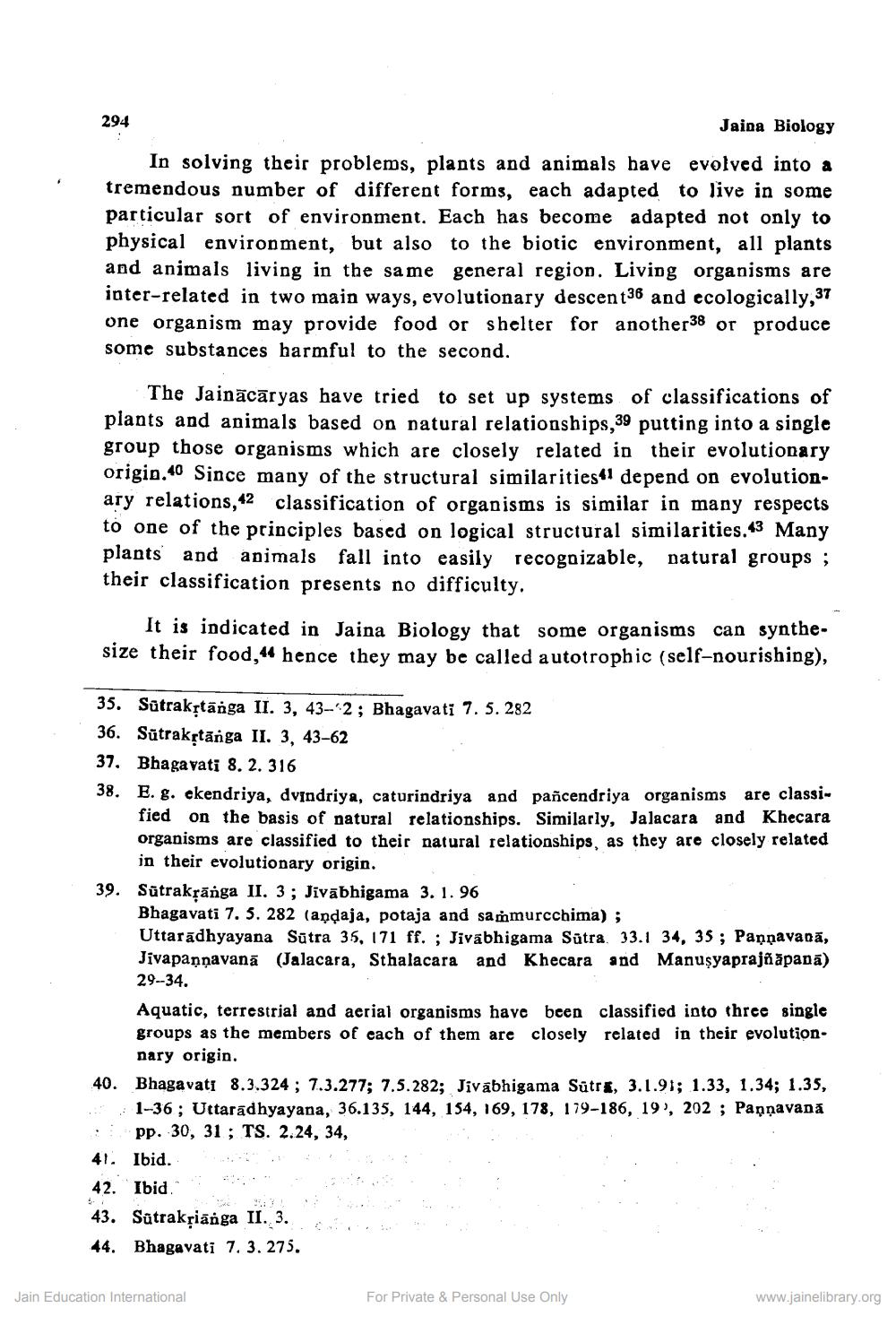________________
Jaina Biology
In solving their problems, plants and animals have evolved into a tremendous number of different forms, each adapted to live in some particular sort of environment. Each has become adapted not only to physical environment, but also to the biotic environment, all plants and animals living in the same general region. Living organisms are inter-related in two main ways, evolutionary descent36 and ecologically,37 one organism may provide food or shelter for another38 or produce some substances harmful to the second.
294
The Jainacaryas have tried to set up systems of classifications of plants and animals based on natural relationships,39 putting into a single group those organisms which are closely related in their evolutionary origin.40 Since many of the structural similarities41 depend on evolutionary relations,42 classification of organisms is similar in many respects to one of the principles based on logical structural similarities.43 Many plants and animals fall into easily recognizable, natural groups; their classification presents no difficulty.
It is indicated in Jaina Biology that some organisms can synthesize their food,44 hence they may be called autotrophic (self-nourishing),
35. Sutrakṛtänga II. 3, 43-2; Bhagavati 7. 5. 282
36. Sūtrakṛtänga II. 3, 43-62
37. Bhagavati 8. 2. 316
38. E. g. ekendriya, dvindriya, caturindriya and pañcendriya organisms are classified on the basis of natural relationships. Similarly, Jalacara and Khecara organisms are classified to their natural relationships, as they are closely related in their evolutionary origin.
39. Sūtrakṛānga II. 3; Jivabhigama 3.1.96
Bhagavati 7. 5. 282 (andaja, potaja and sammurcchima);
Uttaradhyayana Sūtra 35, 171 ff.; Jīvābhigama Sutra 33.1 34, 35; Pannavanā, Jivapaṇṇavanā (Jalacara, Sthalacara and Khecara and Manusyaprajñāpanā) 29-34.
Aquatic, terrestrial and aerial organisms have been groups as the members of each of them are closely nary origin.
40. Bhagavati 8.3.324; 7.3.277; 7.5.282; Jivabhigama Sutra, 3.1.91; 1.33, 1.34; 1.35, 1-36; Uttaradhyayana, 36.135, 144, 154, 169, 178, 179-186, 19, 202; Paņṇavanā pp. 30, 31; TS. 2.24, 34,
41. Ibid.
42. Ibid
&
43. Sūtrakṛianga II. 3.
44. Bhagavati 7. 3. 275.
Jain Education International
classified into three single related in their evolution
For Private & Personal Use Only
www.jainelibrary.org




